Making the Museum
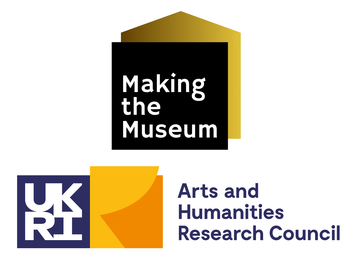
Project dates: 2024-2027
Lieutenant-General Pitt-Rivers did not make the museum in Oxford that bears his name, or the objects within it.
The real makers of the Pitt Rivers Museum lived outside its walls where they were actively engaged in shaping their own lives within local cultural traditions through the artefacts they actively made and used.
Within the databases of the Pitt Rivers Museum there are more than 12,000 records with named makers from across the globe and over 20,000 photographs with identified people in them. These are the people who have made the museum, through their creative energy and skill.
And yet makers and subjects have often been silenced within the Museum's displays, labels, catalogues and exhibitions, which have historically focused on collectors, cultures, and curators.
Making the Museum is the first major research project in an ethnographic museum to investigate maker identities and agencies across the breadth of its collections. Through detailed analysis of the Museum’s database, associated documentation, objects and archives, it will also pioneer a series of maker research fellowships that will transform our understanding of the knowledge, skills, and cosmologies embedded in objects, as well as their continuing power for people today.

Principal Investigator: Prof Chris Morton
Chris is Deputy Director and Head of Curatorial, Research and Teaching at the Pitt Rivers Museum, as well as Professor of Museum Anthropology at the University of Oxford, and a Fellow of Linacre College. Chris is an anthropologist and historian who has carried out fieldwork in Botswana and has published extensively on photographic histories and museum collections, especially relating to Africa and Australia.
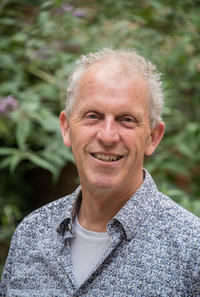
Co-Investigator: Prof Chris Gosden
Chris is Emeritus Professor of European Archaeology at the University of Oxford and Keble College, Oxford, as well as a Trustee of the British Museum. Chris has extensively published on the archaeology of Britain, Europe and the Pacific, and has investigated questions of identity, landscape, material culture and the agency of the material world. He previously led two pioneering research projects at the Pitt Rivers Museum, The Relational Museum and The Other Within, which investigated collector networks and the Museum's English collections respectively.
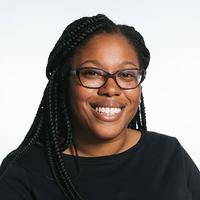
Co-Investigator: Dr Marenka Thompson-Odlum
Marenka is Research Curator (Critical Perspectives) at the Pitt Rivers Museum. Her doctoral research at the University of Glasgow explored that city's role in the trans-Atlantic slave trade through its museum collections. At the Pitt Rivers Museum, Marenka leads on decolonisation and critical thinking work in relation to the Museum's displays, texts, and collections. Marenka is also leading an ArtFund project to commission new objects for the collections and build new relationships with indigenous communities.
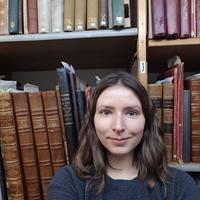
Project Researcher: Dr Beth Hodgett
Beth has trained in archaeology and anthropology and works across both disciplines, using methodological approaches and theoretical insights from each discipline to interrogate museum and archival collections. Their PhD research (based between Birkbeck, University of London and the Pitt Rivers Museum) explored the photographic archive of the early twentieth century archaeologist O.G.S. Crawford, and reflects Beth’s broader research interests in photography and visual culture. The final thesis was titled ‘Life in Photographs: Archaeology, Assemblage and Temporality in the Archive of O.G.S. Crawford’. Beth also holds an MSc in Visual, Material and Museum Anthropology (University of Oxford) and a BA in Theology (University of Oxford).

Research Project Officer: Dr Becky Martin
Becky has a background in the History of Science and Medicine. Her doctoral work explored the role of anatomical models in nineteenth-century medical teaching, focussing specifically on the intersection of their use and visual development with ideas around racial hierarchy. As a Caird Fellow at the National Maritime Museum, she led community engaged research work uncovering histories of individuals previously hidden or forgotten within collections. In her recent projects she has investigated the photographic record of the 1872-76 HMS Challenger Expedition, the colonial history of the London School of Hygiene & Tropical Medicine, and the development of healthcare systems in colonial Nigeria.
History is important, but only to the extent that it helps us shape the present and future in ways that engage the greatest number to help rethink and reshape colonial histories and contemporary cultural identities in the healthiest possible way in the future. By building on the notion that the ethnographic museum is a “community” of agentive objects, Making the Museum will build on recent work in the social sciences to decentre Western networks and to refocus research attention on the submerged histories of the individuals and communities who made the collections.
Our project seeks to understand two interrelated concepts of making the museum: firstly, an understanding of objects as creations, as extensions of a maker’s agency, and secondly that the PRM’s dense displays are an assemblage of such agentive objects, that have affective resonances for those who encounter them. Bringing these two key concepts of making the museum together in the same conversation lies at the heart of the project and its outputs, which may have far-reaching impacts on future museum curation and interpretation.
Seeing historical and colonial collections as the products of makers rather than the assemblages of takers will bring a fresh and much needed new methodological approach to the ethnographic museum as it looks to its collections to shape its future.
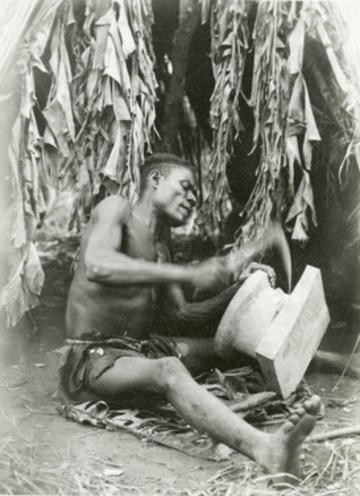
The Zande craftsman Kisanga carving a stool with an adze.
Photograph by E. E. Evans-Pritchard c1927 [1998.341.27.2]
One of my chief informants, Kisanga, was a skilled woodcarver, one of the finest carvers in the whole kingdom of Gbudwe.
E. E. Evans-Pritchard Witchcraft, Oracles and Magic among the Azande (1937: 66).
Our research questions:
-
What is the extent, distribution, and nature of maker/subject data in the Pitt Rivers Museum’s database?
-
From what parts of the world or collections are such data richer, where less so, and what does this say about historical attitudes to maker/subject identities?
-
What time periods are these data on identities associated with, and what might this say about collecting and curating patterns over time?
-
What is the potential for recovering maker/subject identities that have been submerged in the past, due to biases in documentation and collection practices, for instance by using archival sources or published material, as well as oral history and local sources of information?
-
What notable maker/subject identities and stories can be told in association with the data that already exists, and how might this shift our understanding of the perceived value of objects/archives as they move between different contexts, for instance between private collections and the scientific space of the ethnographic museum?
-
if such identities appear to have been suppressed in certain historical periods of collection, or from certain parts of the world, what might that tell us about how the identity/agency of makers has been conceptualised in Western museology?
These data and archive-driven questions will be complemented by more visual/ material and collaborative questions based on a series of maker fellowships that will extend the project's findings and lead our public engagement programme:
- To what extent and in what ways might museum objects/archives be considered as extending the agency of their makers/subjects?
- Is the concept of object agency only applicable in situations where objects were intended to enact such affects, or can it be traced in responses by members of those communities when they engage with objects held in museums (Cornejo González 2019)?
- Do images of important objects or interactive digital 3D models of objects also have the power to produce affective responses in indigenous contexts and thereby, potentially, mediate object agency?
- How can such agency be traced in the object/archive’s biography both before and since acquisition by the museum?
-
Can research into the named identities of makers/subjects in such a museum collection help us understand the way in which maker agency has been used by collectors and curators over time?
-
What hidden histories, such as those of material exploitation, colonial experiences, environmental and economic change, might material analysis of objects bring to the surface as ‘the material bearers of collective memory’ (Ferme 2001: 9), and which are inscribed by makers/subjects in objects and images?
-
What can close material analysis of objects tell us about their makers that is not currently part of the narrative around them? Are certain skills, age, gender, life histories, and other stories about an object’s maker embedded in the way objects are made that can be read through new material ‘readings’ of the object?
-
How might a methodological approach to the museum as a community of agentive objects, a collection that consists of the material extensions of maker/subject agency on those who encounter it, transform our understanding of the ethnographic museum in the future?
- Can notions of maker agency be productively extended to the affectivity of objects on non-indigenous audiences, for instance local audiences to the Pitt Rivers Museum?
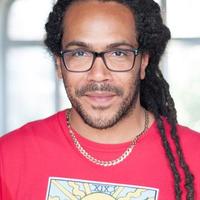
Rawz
Music Maker Fellow 2024
Rawz is an MC and Poet hailing from Oxford with deep interests in the connections between historical music makers and the resonance of their music for local communities today. He first discovered lyric writing in his early teens and found it an essential way to channel his emotions and organise his thoughts through difficult times growing up in one of the UK’s most deprived areas. Since then, Rawz has performed live all over Europe both as a solo artist and with the Inner Peace Records collective and Urban Music Foundation. His music shares his exploration of our interconnected worlds and his responses to them, promoting outer change and advancement through inner reflection and positive action. Rawz has held creative fellowships at The Oxford Research Centre in the Humanities as well as St John's College, Oxford.
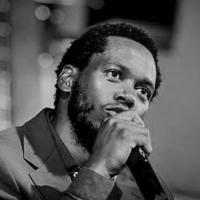
X
Music Maker Fellow 2024
X (Xolile Madinda) is a hip-hop artist, social activist, community educator and entrepreneur based in Grahamstown-Makhanda in the Eastern Cape of South Africa. X – together with Mxolisi Bodla (aka Biz) – is one of the founding members of Defboyz, one of the most influential hip hop groups in the Eastern Cape. Biz and X combine hip hop, poetry, and beats with social messages and community activism to forge social cohesion. X is also one of the founding members of the Youth Art group Fingo Revolutionary Movement and Fingo Festival, a week-long annual event now in its ninth year and part of the National Arts Festival. X programmes and organizes an ambitious roster of artists and speakers, blending cutting-edge South African DJs, beats, and rhymes with discussions, live art, lectures, and children’s activities. X is also the founder and CEO of Around Hip Hop and The Black Power Station, a pioneering art space within the re-emerging industrial area of Grahamstown-Makhanda.
X brings extensive experience of working with South African music archives, especially the International Library of African Music (ILAM) at Rhodes University, and the McIntire Dept of Music at the University of Virginia.

Kileni Fernando
Inaugural San Visiting Fellow
Kileni Fernando is the inaugural San Visiting Fellow at the Pitt Rivers Museum, co-sponsored by the Africa Oxford Initiative and developed in association with the !Khwa ttu San Heritage Centre. She is a !Xung-speaking San woman from Namibia, currently pursuing a Bachelor of Laws (LLB) degree with the Open University of Tanzania.
Since 2017 Kileni has acted as a voice for the San as a development consultant for the !Khwa ttu San Heritage Centre on the West Coast of South Africa. She is a co-founding member of an indigenous San youth organisation called Ana-Djeh San Trust (AST). Kileni has completed several courses on marginalization & inequality, as well as a diploma in legal history. She has also volunteered as a community facilitator for the Women’s Leadership Centre (Windhoek, Namibia) on the project “Speaking for ourselves, Voices of the San Young Women”.
She is working with the Making the Museum project to improve the categorisation of San materials within the museum database and change the understanding and presentation of San collections within the museum. Check out our interviews with Kileni on the videos tab.

Robbie Teremoana Atatoa
Mangaian carver and knowledge holder
Robbie is a traditional carver from the island of Mangaia, in the Cook Islands.
He has received funding from Creative New Zealand to work on developing a more detailed understanding of the Mangaian carving patterns, toki development, lashing, black carving, and all other skills involved in traditional arts practice in Mangaia. He has previously helped with the identification of traditional Mangaian toki (adze) at both the Horniman Museum and the National Maritime Museum. He is a descendant of Tangitoru – a master carver – who Robbie identified as having carved items that are now on display at the NMM.
He is working with the Making the Museum project to help us better understand the makers and making processes of toki in the Pitt Rivers Museum collections.

Ariana Tikao
Commissioned poet and performer
Ariana is a writer, singer, composer and leading player of taonga puoro (Māori instruments) who was honoured as a New Zealand Arts Laureate in 2020. Her creative work explores themes relating to her Kāi Tahu tribal identity and mana wahine, the power of women. She started performing in 1993 with the folk group Pounamu, and has subsequently released three solo albums: Whaea (2002), Tuia (2008), and From Dust to Light (2012). In 2015 Ariana and Philip Brownlee were commissioned by the Christchurch Symphony Orchestra (CSO), to compose the first concerto for taonga puoro ‘Ko te tātai whetū’. Ariana performed it with the CSO that year, and later with Stroma and the Nelson Symphony Orchestra. She is also a published writer and poet, recently publishing Te Rā: The Māori Sail (2023) (illustrated by Mat Tait) to commemorate the exhibition of Te Rā in Aotearoa (New Zealand).
She is working with the Making the Museum project to produce poetry in response to the taonga puoro in the Pitt Rivers Museum collections. Photo by Ebony Lamb.

Graham Taylor
Workshop leader and research partner
Graham Taylor is the master potter behind Potted History, a replica-making company whose aim is to share their knowledge far and wide and regularly work with Universities in the UK and USA, running workshops, creating replicas and advising on research projects. The Potted History team (which also includes Graham's daughters, Sarah Lord and Clare Lamy) work with museums such as The British Museum, The Ashmolean, The Great North Museum, Stonehenge Visitors Center, and Vindolanda Roman Fort. Graham is working with the Making the Museum project to inform our knowledge of making practices for the Museum’s collection of roman pottery. In September 2024, he delivered a samian ware pottery workshop for museum staff and other object history experts as part of our Makers and Fakers workshop. One of the pieces from this workshop, produced from a mould decorated by Research Project Officer Dr Becky Martin, will shortly be accessioned into the museum’s collections.
Find out more about Graham's work with Potted History at potted-history.co.uk. Photo by Emma Jones.

Dr James Dilley
Workshop leader and research partner
Dr Dilley is the founder of AncientCraft, a company whose aim is to engage individuals and communities in prehistory through the creation and delivery of interactive experiences, using quality replicas and experienced specialists. His work is displayed at The British Museum and Stonehenge and he has worked with several high profile media companies such as the BBC, National Geographic, New Scientist and Dorling Kindersley Publishing. He is working with the Making the Museum project to inform our knowledge of making practices for the Museum’s collection of stone tools. In September 2024, he delivered a flint knapping workshop for museum staff and other object history experts as part of our Makers and Fakers workshop. He will shortly be appearing on an episode of our forthcoming Making the Pitt Rivers Museum podcast and has been working with the project team to produce material for some of our written outputs.
Find out more about James’ work with AncientCraft at www.ancientcraft.co.uk. Photo by Brandon Bishop Photography.

Phil Omodamwen, Bronze caster
Making the Museum Creative Fellow 2025
Phil is a sixth-generation Bronze caster and artist from Benin City, Nigeria, whose residency at the Pitt Rivers Museum included close examination of the Edo collections, museum visits, talks and staff training, as well as a unique collaboration with Tooley's Forge in Banbury, where he cast two commemorative heads using the small blacksmith's forge and tools. This was the first time Phil had cast in Europe, and the first time Tooley's Forge had hosted an African metalworker in its 247-year history! Phil is working on a major new commission for the Pitt Rivers in 2025 – a large new bronze plaque on the theme of modern Benin history.

Ems Orving
Blacksmith
Ems is the resident blacksmith at Tooley's Boatyard in Banbury, a historic forge and dry dock founded in 1778. As a research partner on the project, Ems collaborated with Phil Omodamwen in April 2025 on the casting of two brass commemorative heads representing the Oba (king) of Benin, using the forge fire, a small crucible, and blacksmithing tools. This unique sharing of skills and expertise between craft traditions led to an exchange of tools between the two – a casting crucible being added to the forge's collection of tools, and a pair of blacksmithing tongs returning to Nigeria!

Dr Sarah Doherty
Research partner
Dr Doherty is an archaeologist and ceramicist, specialising in Egyptian ceramics, experimental archaeology and the potter's wheel. She is particularly noted for her research on the potter's wheel, and its adoption and use, in Egypt and Sudan and has worked as the ceramicist for the Great Aten Temple Project, Tell el Amarna, Egypt and at Gebel el Silsila Quarry site, Egypt. She has been helping the Making the Museum project team to interpret some of the experimental ceramics produced by previous museum curators in their attempts to replicate ancient Egyptian ceramic techniques. Take a look at Sarah's discussions with us on our videos tab!

Uwagbale Edward-Ekpu
Research partner
Uwagbale is a heritage and museums researcher at the Museum of West African Art (MOWAA). He recently co-curated the new Kingdom of Benin display at the Pitt Rivers Museum, contextualising the collection through new accurate visual representations and text. He has also been working with the project team to explore the Benin collections further, explaining motifs and object usage. Check out his insights on our videos tab!

Shane Balkowitsch
Wet plate photographer
Shane makes photographs in his studio in Bismarck, North Dakota, according to the 1851 method developed by Frederick Scott Archer. The Pitt Rivers Museum is the largest archive of his Native American studio portraiture outside of North Dakota. In August 2025 Shane joined project staff and members of the public in an event to celebrate the donation of a further five plates to the collection. He also gave a talk about the wet plate photographic process and his preference for making Ambrotypes out of them.
The Gathering Place: Africa
May 4 2024

An evening of original music, performance, art and creative participation as we gather to explore diverse African arts, culture and heritage at the Pitt Rivers Museum. Contemporary artists from South Africa, West Africa and Oxford come together to re-engage and share newly created work grown from historical sounds, images, objects and histories within the Museum's collections. Expect live beats, poetry, sound, art, visual art, movement and more.
Featuring Xolile 'X' Madinda, Rawz, Lydia Idakula, Ndukwe Onuoha, Isaac Emokpae, Maka, Donna Ogunnaik.
Robbie Atatoa: Carving Demonstration
Wednesday 10 July 2024, 10.30 - 12.00

Robbie Teremoana Atatoa is a traditional carver from the island of Mangaia, in the Cook Islands, who received funding from Creative New Zealand to work on developing a more detailed understanding of the Mangaian carving patterns and toki development. He is a descendant of Tangitoru – a master carver.
In this session, he shared his expertise and the history of his craft with us, discussing his work identifying traditional Mangaian toki (adze) at both the Horniman Museum and the National Maritime Museum. He will also be performing a live demonstration of traditional carving practices.
Check out footage from this event in our videos tab.
Ariana Tikao: Singing Treasures
Friday 20 September 2024, 13.00 - 14.00

A ceremonial performance of music and spoken word by Ariana Tikao in the Pitt Rivers Museum galleries, in dialogue with and in response to the taonga puoro (singing treasures) and other ancestral artefacts on display.
Ariana is a writer, singer, composer and leading player of taonga puoro (Māori instruments) and was honoured as New Zealand Arts Laureate in 2020. Her creative work explores themes relating to her Kāi Tahu tribal identity and mana wahine, the power of women.
Makers and Fakers: How copies, replicas, casts and fakes 'make' museum collections
September 30 - October 1 2024

Historically, museums have been spaces for material experimentation, the practical manipulation of objects, and the testing of hypotheses. Objects were modelled, moulded, reproduced, and shared with others. Beyond the walls of the institution, museums also acquired 'fakes' - objects purporting to be something that they are not - as well as casts and paper squeezes, often made during colonial expeditions.
This two-day object and practise-based workshop brought together makers, academics, and museum practitioners to consider the nature and role of copies, casts, replicas and fakes in museums, the social and cultural practices that gave rise to them, what we can learn from them, and what museum futures they may have.
Download the full programme here.
Tea and Talks on Nigerian Archaeology
Thursday 3rd April 2025

This seminar had two speakers:
Uwagbale Edward Ekpu is a researcher from Benin City, Nigeria. Uwagbale has recently been working with the archaeology team at the Museum of West African Art (MOWAA) excavation projects in and around Benin City. In this short talk, Uwagbale will give us an update on the recent fieldwork. Uwagbale has also co-curated the new Benin Kingdom display on the 1st floor of the Pitt Rivers Museum galleries and is in Oxford to do more research on the Benin Kingdom objects.
Dr Ferdinand Saumarez Smith is Director of Factum Foundation London. Factum Foundation for Digital Technology in Preservation was established with the aim of using Factum Arte's innovative processes and technologies for preservation, education, and the dissemination of cultural heritage. Factum has recently been working with collaborators to replicate the famous 9th century Igbo-Ukwu bronzes, first discovered in Nigeria in the 1930’s, then more extensively excavated in the late 1950s and early 1960s. In this short talk and demonstration, Ferdinand will share with us the replicas of the Igbo-Ukwu bronzes and talk about the work being done to produce facsimiles of archaeological objects such as the Igbo-Ukwu bronzes when the originals are inaccessible to local communities.
Benin bronzes: legacy and redisplay at the Pitt Rivers Museum
Friday 4th April 2025

A launch event for the newly redisplayed Kingdom of Benin case, in conjunction with a private viewing of artwork by Isaac Emokpae originally created as part of The Gathering Place: Africa event.
The event consisted of an informal reception and viewing opportunity, with short talks from the artists and research collaborators: Isaac Emokpae, Uwagbale Edward-Ekpu (co-curator of the new Kingdom of Benin display), and Phil Omodamwen (a sixth-generation sculptor and bronze caster from Benin City and current Creative Research Fellow on the project).
April Fakes Week: Makers and Fakers Zine Workshop
Sunday 6th April 2025

As part of the Oxford-wide ‘April Fakes Week’, ‘Making the Museum’ researcher Dr Beth Hodgett and Zine collective Imperfect Bound (@imperfectboundcollective) explored the stories behind the hundreds of copies, casts, replicas and fakes in the Pitt Rivers Museum collection. They asked: How do these often-neglected objects help us think differently about the relationship between making and museums? And how can making Zines (pronounced 'zeens') challenge us to reconsider ideas of ‘authenticity’, ‘originality’ and creativity?
The lives of the Pitt Rivers Museum’s ‘Makers and Fakers’ — like the infamous forger of prehistoric artefacts Flint Jack — were explored in a behind-the-scenes tour of the object collections, before participants made pages for a collaborative Zine to be accessioned into the Pitt Rivers Museum Balfour Library. Select pages from the Zine will also feature in the special academic journal issue the project is publishing on this theme, and be incorporated into our ‘Making the Museum’ exhibition.
Research Seminar in Visual, Material, and Museum Anthropology
Fridays in May 2025

A four-part takeover of the ongoing VMMA seminar series featuring speakers from the Making the Museum project, the School of Archaeology, SOAS, and the London School of Fashion speaking about makers and making from a variety of different perspectives. Fridays at 12noon, Pitt Rivers Museum Lecture Theatre.
See the full seminar listings here.
Access the series poster here.
FORM: public workshop
16th and 17th September 2025
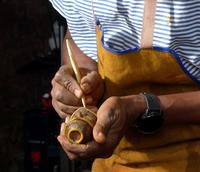
The Pitt Rivers Museum is home to many objects that have been formed, in a variety of ways and in many materials. Thinking about forming invites questions about the temporality and processes of making, about the politics of labour, and about the affordances of the materials we choose to make with. What can placing museum objects in dialogue with contemporary practitioners and researchers reveal about their original makers, and by extension the very museum itself? Can a renewed focus on form and forming help us recover new information about makers in instances where archival information about makers has been lost or is missing from the historical record?
In this multi-day workshop, academics and practitioners will come together to discuss and explore through practice what it means to form something.
Access the workshop programme here.
Check out some of the videos produced by the project team, as well as professional videos produced by Sam Mansell of Drop All Words Media and Tim Hand of Tim Hand Production, below.
Join the Making the Museum project team for a behind-the-scenes look at how we are trying to redress this balance in the information the museum holds about its collections. You'll not only hear from researchers and museum professionals but also practitioners, artists, and other modern makers from communities around the world. As we collaborate, you'll hear about it, giving a real-time insight into the inner workings of the museum.
Check out the latest episodes below, or listen (and subscribe) directly/ via Apple podcasts/ on Spotify/ through YouTube Podcasts.
Published:
B. Hodgett, C. Gosden, R. Martin, C. Morton and M. Thompson-Odlum, ' "Making the Museum" and the archaeology of the Pitt Rivers Museum collection', Antiquity (2025), pp.1-7. https://doi.org/10.15184/aqy.2025.43
Forthcoming:
SPECIAL ISSUE 'Making the museum: how copies, replicas, casts, and fakes 'make' museum collections', Journal of the Anthropological Society of Oxford (accepted, forthcoming 2026)
Hodgett et al. Making the museum: how copies, replicas, casts, and fakes 'make' museum collections - The Zine, Imperfect Bound: Oxford (forthcoming 2025)



